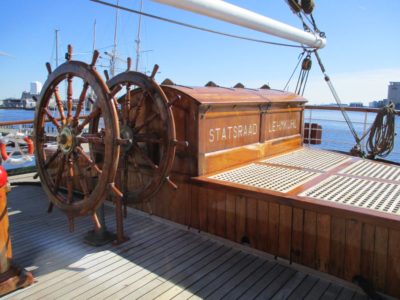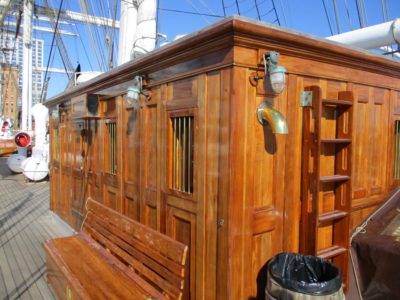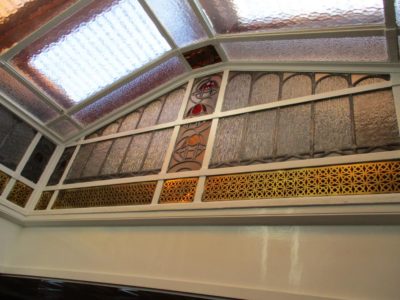Meeting Mister Mulesaw
I have distant memories from more than a half-century past regarding my sister and a French pen-pal with whom she corresponded throughout high school and perhaps beyond. Evidently Pen Pal Clubs were a thing back then, I do not know if these were school activities or what, but I remember her reading tales from Monique(?) about every day life in 1960s France. These memories are charming artifacts from a time when people actually wrote letters by hand, on paper, using pens and stamps and such. For a time I was a letter writer, mostly to parents and siblings. My father would often shout out to my mother, “Mary get out the dictionary. Here’s another letter from Don.” (Actually my parents were both lovers of words and their skillful use, a trait that has redounded through the generations of their descendants; my 102 y.o. mother has more than a half-dozen great-grandchildren).
My sister is still an enthusiastic letter writer and I correspond widely myself, albeit by electronic means. My mindset might be 17th Century, but I am at least superficially conversant with modern technology. Via the magic of the interwebz I correspond with folks, mostly fellow woodworkers, from around the globe.

It was by these means that I made the virtual acquaintance of Jonas Jensen, a marine engineer and woodworking/homesteading blogger from Denmark. I have been following his Mulesaw blog for years, and corresponding with him nearly as long. I remember once chatting with Chris Schwarz about Jonas when the latter attended Chris’ tool chest class in Germany, and Chris remarked, “Yeah, Jonas is your kinda guy.”
Our correspondence is voluminous and while it concentrates on woodworking it also contains forays into family, homesteading, world-views, and a host of other rabbit trails.
Until recently Jonas’ work travels were concentrated in the northern Atlantic Ocean as he was an engineer on supply ships providing support for North Sea oil rigs. We who follow him were never short of amusement as he would chronicle amazing woodworking projects using crate wood and similar materials and a sparse tool-kit working in the machine shop of the ship. Though I encouraged him to visit or even move to the Virginia Highlands he was bound to family and job in Scandanavia and the surrounding region. Any trek to North America was simply out of the question.
Recently all of that changed. About three months ago Jonas excitedly informed me of a job change, moving from utilitarian North Atlantic supply ships to become the Chief Engineer on a heritage Norwegian sailing vessel.
And, that ship makes an Atlantic circumnavigation every year, stopping in Norfolk, Virginia. With great anticipation we marked the calendar and planned to meet in person on his ship. We finally did so last week.

As I was approaching the berth where the ship was docked I wondered if I would recognize it. Of that there turned out to be no doubt. The ship is striking in appearance, and the giant Norwegian flag allowed me to find it effortlessly. I strode up the aluminum gangplank and a minute later the beaming face I recognized from his blog approached me and we greeted each other warmly.

What followed was a memorable time of fellowship and learning about the ship that was his new work-home. I was struck by the elegance of the ship even as I was at its entry. This fitting for a section of folding rail was truly impressive, only the first of many times I was agog in the coming hours.


I had the same overwhelming impression of the yards of well-fashioned mahogany throughout the ship, from the precisely fitted decking to the vintage steering wheels (two sets) to the exquisite pilot house.

Though retaining its century-old heritage and configuration, the ship is necessarily a thoroughly modern sea-going vessel as you might expect for a ship traversing the full Atlantic Ocean. To the greatest extent possible the modernization of the ship is disguised, as in these rescue runabouts suspended over the deck. There is no practical way to make these speedboats look old, but at least the booms used to hold and lower them are fashioned to look like they were part of the original construction more than a century ago.


The attention to historic presentation and modern practicality continues below decks as well, some times the modern looking not much different than the vintage. For example, the carpenter’s shop looks like any carpenter shop might look in such a setting. Still, the absence of “flat, square, and true” almost anywhere on the ship is disconcerting to us landlubbers. I think a week in this shop would probably make the OCD/anal-retentive type woodworkers mad.

Just down the way from this shop is one I think Jonas might be eyeing for re-fitting as another woodworking shop. The set-up is well underway with this bequeathed set of hand planes already ensconced there; the space only needs Jonas’ magic ministrations to turn it into a fine woodworking shop.

In between these two spaces was a store room filled with ropes. Lots and lots and lots of ropes of every size and configuration, along with a number of examples of the sailor’s knotwork arts.

One of the primary functions of the ship is as a training vessel for naval cadets from the Navies of Norway, Sweden, Denmark, and The Netherlands. When hosting groups of these naval cadets, usually about 60 at a time if I recall correctly, these younger folks sleep in hammocks hung from hooks in one of these large bays. You can spot the hooks on the beams overhead. Each cadet has 1/3 of the floor chests, and the dining (and studying?) takes place at the benches and tables situated along the hull.

Fortunately further back in the ship are the cabins for the crew and officers of the ship, including Jonas. This cabinet in Jonas’ cabin re-emphasizes the reality that on a ship like this, almost nothing is flat or square. The cabinet and cabin doors often look like they came from a crazy house in an amusement park.



The accouterments and detailing of these spaces are quite elegant. Carved stair railings, furnishings, and skylights are all magnificent.

After the tour of the ship we went out for some barbecue and the conversation lasted for hours, covering woodworking of course, but also rural living, faith and world view, families, and the state of Western civilization. Jonas made arrangements for me to sleep on board, and before dawn the next morning we parted and I headed for home looking forward to our next reunion.


What an interesting ship. The utility of beauty is a real part of that vessel.